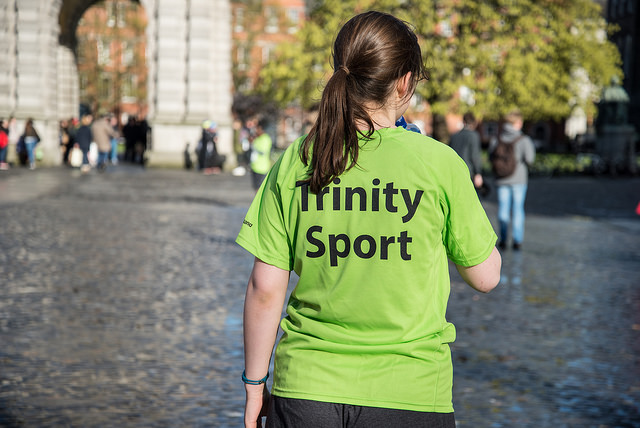Trinity researchers have discovered that exercise can help stimulate bone growth and as a result manage bone diseases.
The team, consisting of researchers from the Science Foundation of Ireland Research Centre for Advanced Materials and Bioengineering Research (AMBER) and Trinity’s School of Engineering, discovered that physical loading, such as that experienced during exercise, causes bone cells called osteocytes to stimulate bone marrow.
This marrow contains stem cells which then initiate new bone growth. This mechanism can be harnessed to develop new therapies for bone disease management.
Such diseases include osteoporosis which affects 300,000 people in Ireland. Osteoporosis becomes more problematic as bone regeneration slows with age, increasing the risk of getting a fracture to 25 per cent in men and 50 per cent in women over the age of 50.
The associated health costs that incur totals an estimated lifetime cost of care of €653 million, according to the Irish Osteoporosis Society. New therapies for this condition have the potential to lower these costs, aiding patients and healthcare budgets in the process.
It is well known that exercise supports bone health, but the particulars of this mechano-biological pathway have not been fully revealed. This Trinity team found that when subjected to physical loads that mimic exercise, osteocytes release chemicals from nano-sized storage compartments called vesicles. This enhances differentiation of stem cells in the bone marrow and stimulates growth of new bone.
In a press statement, Prof David Hoey, an associate professor of biomedical engineering in Trinity’s School of Engineering, said: “This work highlights the importance of considering physical factors in biology and medicine, demonstrating an interesting example of where mechanics alone was sufficient to change cell behaviour, and in this case, support bone growth.”
“This gives us significant insight into the role of exercise in bone formation and specifically intra-cellular communication”, he added.
A key finding from this study, published in the scientific journal Stem Cells Translation Medicine, is the role of vesicles in this process. Under physical loading, the vesicles act as a means of communication between the osteocytes and the bone marrow stem cells. The chemicals released from the vesicles tell the stem cells to initiate cell differentiation that is necessary to form new bone. This process has potential to be targeted for a new cell-free therapeutic approach to promote bone regeneration.
Prof Hoey also said that this work “identified that mechanically activated vesicles can be harnessed to promote stem cell differentiation in the lab.”
Harnessing these small vesicles we hope to develop new therapies for bone regeneration that mimic the beneficial effects of exercise on bone, potentially transforming how millions suffering from osteoporosis and bone defects are treated each year”, he said. “Our next step is to test their efficacy in pre-clinical models.”
The research was funded by the Irish Research Council, the European Research Council and Science Foundation Ireland in collaboration with Prof Lorrain O’Driscoll from Trinity’s School of Pharmacy.







